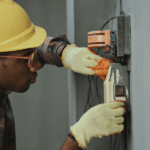Buying a car can be an exciting yet stressful experience. While it’s easy to get caught up in the excitement of finding your dream vehicle, it’s essential to stay focused and make smart decisions when dealing with car dealerships. Whether you’re shopping for a new or used vehicle, knowing how to navigate the car-buying process can save you time, money, and frustration. This guide outlines five effective ways to deal with a car dealer, helping you negotiate confidently and secure a good deal. Whether you’re buying from a Ford dealership in Beaufort, SC, or any other location, these strategies will be invaluable.
Do Your Research Ahead of Time
Before stepping foot into a dealership, it’s crucial to be well-prepared. Doing your research will not only empower you but also give you a significant advantage when negotiating with the dealer. Start by researching the specific make and model of the car you’re interested in. Understand its market value, features, safety ratings, and fuel efficiency. You can easily find this information on websites like Kelley Blue Book, Edmunds, or CarGurus.
Having a solid understanding of the vehicle’s price range will help you avoid overpaying. Dealers often mark up prices, so knowing the fair market value enables you to negotiate with confidence. It’s also helpful to research the dealership itself, read customer reviews, and check if there are any ongoing promotions or special offers.
What to Focus On
- Car Value: Use tools like Kelley Blue Book to understand the car’s fair market value.
- Incentives: Look for any promotions or special financing options the dealership may be offering.
- Customer Reviews: Reading reviews can give you insights into the dealership’s reputation, customer service, and transparency.
Be Firm but Polite During Negotiations
Negotiation is one of the most critical aspects of buying a car. Many buyers feel intimidated by the process, but it’s important to remember that the salesperson expects you to negotiate. Be firm but polite in your approach. Start by stating the price you’re willing to pay based on your research, and don’t be afraid to walk away if the dealer isn’t willing to meet your terms.
Salespeople are often incentivized by commissions, so they may push for a higher price. Don’t let the pressure get to you. Stick to your budget and avoid getting caught up in the excitement of closing a deal. If the dealer offers additional features or packages, take a moment to evaluate if they’re worth the extra cost. It’s also worth mentioning that many dealerships will try to upsell warranties, maintenance plans, or other extras, so be prepared to say no if you’re not interested.
Key Negotiation Tips
- Set Your Budget: Know your maximum budget and stick to it.
- Don’t Show Emotion: Stay calm and composed during negotiations, even if you’re excited about the car.
- Walk Away if Necessary: If the dealer won’t meet your price, be ready to walk away. Often, this tactic can lead to a better offer.
Understand Financing Options
Car dealers often make a significant portion of their profit from financing, so it’s essential to understand your options before accepting any offers. Many dealerships work with a network of lenders to provide financing options for buyers. However, it’s important to note that these offers may not always be the best deal.
Before heading to the dealership, it’s wise to secure pre-approval for an auto loan from your bank or a credit union. Having pre-approval gives you the advantage of comparing the dealer’s financing options with the rates offered by your lender. This will help you determine whether the dealer’s financing terms are competitive. Additionally, dealerships may offer financing incentives like low-interest rates or cashback offers, which can be worth considering if you meet the qualifications.
Things to Look Out For in Financing
- Interest Rates: Compare the dealership’s financing rates with those from your bank or credit union to ensure you’re getting a good deal.
- Loan Term: Be mindful of the loan term. While longer terms may lower your monthly payment, they can lead to higher interest costs over time.
- Down Payment: Consider how much you can afford to put down upfront. A larger down payment may reduce your monthly payments and overall interest.
Avoid Common Dealership Traps
Car dealerships often use tactics to maximize their profit margins, which can be costly for uninformed buyers. By recognizing these common traps, you can avoid falling victim to them. One such tactic is the “Four Square Method,” where the dealer manipulates four aspects of the sale—price, trade-in value, monthly payment, and down payment—to confuse the buyer. By focusing on one element of the deal (often the monthly payment), the dealer may increase the price of the vehicle or decrease your trade-in value without you realizing it.
Another common trap is offering a higher trade-in value in exchange for agreeing to pay a higher price for the new vehicle. Make sure to negotiate the car price and trade-in value as separate transactions to avoid this situation. Additionally, some dealerships may try to rush you into signing paperwork without explaining all the terms clearly. Always take your time and thoroughly read any contracts before signing.
Dealership Traps to Watch For
- The Monthly Payment Focus: Don’t let the dealer only discuss the monthly payment. Ensure you understand the full price of the car.
- Extended Warranties and Add-Ons: Dealers may try to sell you extra features that you don’t need. Be sure to evaluate their value before agreeing to them.
- Trade-In Tricks: Separate the negotiation of your trade-in value from the car purchase price to avoid getting a bad deal on either.
Take Your Time and Inspect the Vehicle
Once you’ve agreed on a price, it’s essential to take your time inspecting the vehicle before finalizing the deal. Whether you’re buying a new or used car, thoroughly inspect the exterior, interior, and under the hood. Look for any signs of damage, wear, or malfunctioning parts. It’s also a good idea to test drive the vehicle to ensure that it performs as expected.
For used cars, request a vehicle history report to check for any past accidents, title issues, or mechanical problems. If you’re unfamiliar with cars, consider hiring a trusted mechanic to conduct a pre-purchase inspection, especially for used vehicles. Even for new cars, it’s important to double-check everything to ensure there are no defects or issues before you sign the paperwork.
What to Check During the Inspection
- Exterior: Look for dents, scratches, or rust that might indicate previous damage.
- Interior: Test all buttons, switches, and systems, including air conditioning, radio, and safety features.
- Mechanical Condition: Listen for unusual noises during the test drive and check for any warning lights on the dashboard.
- Vehicle History: For used cars, request a Carfax or AutoCheck report to review the car’s history and any previous accidents or repairs.
Published by: Khy Talara



















